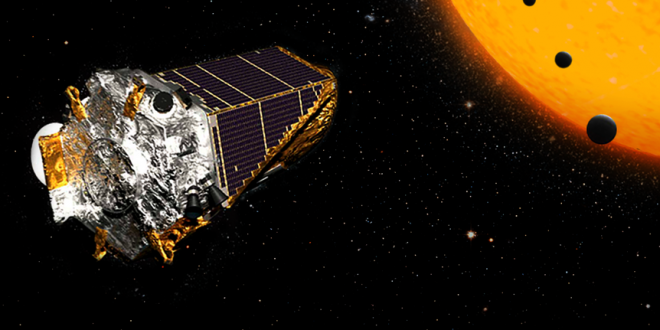NASA is set to reveal a major breakthrough in its search for planets that can support alien life.
Few details of the event have been released but NASA said the news will focus on a discovery made using artificial intelligence from Google.
The Kepler space telescope is used by NASA in the search for planets outside of our solar system, known as exoplanets.
The mission has so far discovered 21 Earth-sized planets known to orbit within the habitable zones of their stars, and the latest announcement is likely to reveal NASA’s best study of alien planets.
The teleconference will stream on Thursday, December 14 at 1pm.
Participants at the briefing will be Paul Hertz, NASA astrophysicist, Christopher Shallue, Google AI senior software engineer, Andrew Vanderburg, astronomer and NASA Sagan Fellow, and Jessie Dotson, Kepler project scientist.
NASA said in a release it will announce “the latest discovery made by its planet-hunting Kepler space telescope”.
The Kepler mission, which began in 2009, was launched to explore how common planets are beyond our solar system.
Researchers made the latest breakthrough with the help of artificial intelligence technology, which was used to analyse the data sent down from the telescope.
NASA added: “The discovery was made by researchers using machine learning from Google.
“Machine learning is an approach to artificial intelligence, and demonstrates new ways of analysing Kepler data.”
The Kepler telescope surveys our region of the Milky Way galaxy to discover hundreds of Earth-size and smaller planets in or near the habitable zone of their stars.
The habitable zone is the region in a planetary system where liquid water might pool on the surface of an orbiting planet.
Scientists now believe there may be at least one planet orbiting every star in the sky.
Kepler completed its main mission in 2012, but continued to collect data in an extended mission.
In 2014, the spacecraft began a new mission called K2, which continues the search for exoplanets while studying other cosmic phenomena.
EveningStandard
 Lebanese Ministry of Information
Lebanese Ministry of Information



